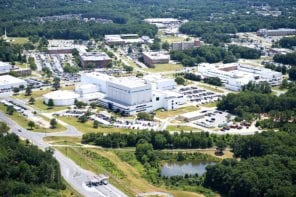The globalization of industrial research and development is now a fact of life. R&D was once a corporate function, performed on a single site near a company’s headquarters. But now the increasingly global nature of the markets for high-tech products, combined with ever shorter product cycles, requires goods to be manufactured all over the world and, as a result, the R&D needed to support this activity must be close at hand. Cheaper labour and reduced transport costs provide even further incentives.
But that hardly explains why Microsoft, the world’s biggest software company, has chosen Cambridge in the UK as the site of its first basic research facility outside the US. Microsoft has recognized that knowledge itself is an increasingly global commodity and one that it must actively seek out. The Microsoft deal is actually quite a small example of the UK’s success in attracting high-tech inward investment. Indeed the UK attracts more inward investment than any country in Europe. And not all of this goes to well-off areas like the Silicon Fen around Cambridge: south Wales, Silicon Glen in Scotland, the north-east of England and Northern Ireland have all received big investments by various computer, electronics, semiconductor and magnetic disk drive companies from the US and the far East. These sites cover a broad range of functions from basic research to full-scale manufacturing plants.
So what are the characteristics of a successful foreign R&D site? Walter Kuemmerle of the Harvard Business School recently studied 32 US, Japanese and European multinational companies, mostly in the electronics and pharmaceutical sector (Harvard Business Review March-April 1997). The companies had a total of 156 dedicated R&D sites abroad, more than 60% of them established after 1984. Kuemmerle found that the centres typically employed about 100 people and could be divided almost equally between two types of site. The first, home-base-augmenting sites, tap knowledge from competitors and universities around the globe and send it back to headquarters. Such labs are often found in the original Silicon Valley in California, Princeton in New Jersey and the Kanto area around Japan. For such labs to be successful the director must be a prominent local scientist who can attract talent and build collaborations with local centres of excellence. Microsoft Research Cambridge is of this ilk. Close ties with the home-base site – best achieved through exchange visits – are also vital. The second, home-base-exploiting sites, support manufacturing and product development overseas. Their primary role is to speed the transfer of technology from the home-base site to the manufacturing plant. Therefore they need to be close to large markets and are best managed by a company employee. Although the two types of sites have very different roles, Kuemmerle identified several characteristics that are essential for both. In particular, the directors of such labs need four qualities: they must be respected scientists and good managers; they have to be able to integrate the new site into the company’s existing R&D network; they need to have comprehensive knowledge of technology trends; and they have to be able to build good local links. “Appointing an outstanding scientist or engineer who has no management experience can be disastrous”, he warns. Back in the UK it could be argued, of course, that the high level of inward investment in the UK is a sign of the weakness of British companies in high-tech areas. However, complaints that the profits generated by discoveries made at Microsoft Research Cambridge will flow overseas ring hollow because the company has not received any government subsidies to set up in Cambridge. And it is near-impossible to have sympathy with the most frequent complaint about the investment – that it will increase house prices and traffic jams in the city. Haven’t they heard of the information superhighway?



